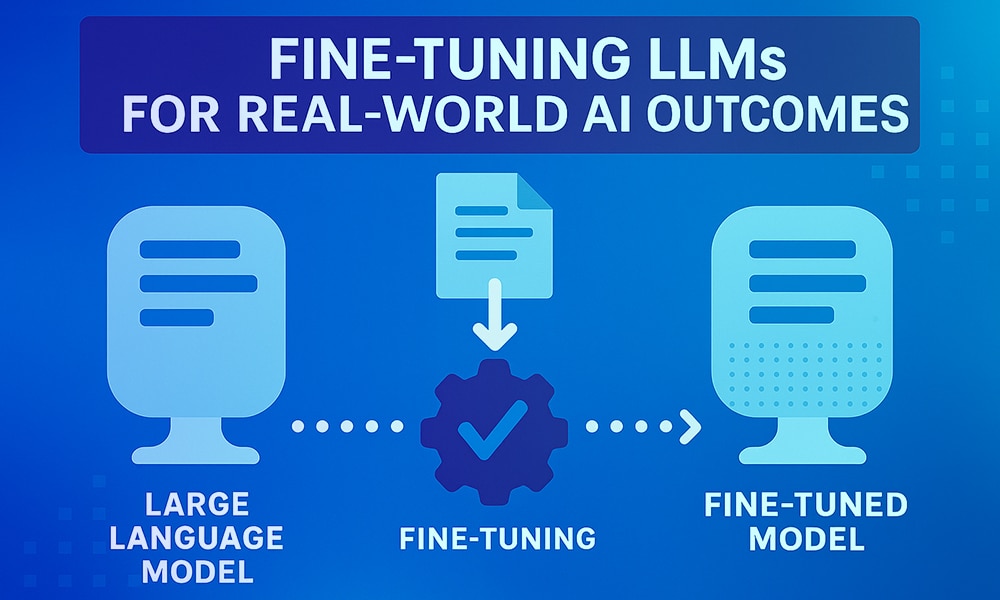AI hallucinations refer to instances where AI models, particularly large language models (LLMs), generate information that appears true but is incorrect or unrelated to the input. This phenomenon poses significant challenges, as it can lead to the dissemination of false or misleading information.
These hallucinations are not random errors but often result from:
- The complex interactions of the data you train the models on,
- The design of the model,
- How the model interprets prompts.
Thus, addressing AI hallucinations becomes critical for the reliability and trustworthiness of AI systems. It’s essential in applications where you need accuracy and factual correctness. Let’s understand this in more detail.
Causes of AI Hallucinations
AI hallucinations can stem from various factors, such as:
AI Misinterpretations Due to Poor Training Data
The training data's quality, diversity, and representativeness impact how AI models interpret and respond to inputs. Inadequate or biased training data can lead to AI models generating false or misleading outputs. Selecting the right training data is essential to ensure the model has a balanced and comprehensive understanding of the subject matter.
Machine Learning Errors from Overfitting
Over fitting occurs when an AI model is trained on a restricted dataset. It causes the model to memorize specific inputs and outputs rather than learning to generalize. This lack of generalization can cause the model to produce hallucinations when encountering new data.
AI Interpretation Errors with Idioms or Slang
AI models might struggle with idioms or slang expressions they haven't encountered in their training data. This unfamiliarity can lead to AI output anomalies.
AI Data Distortions from Adversarial Attacks
Adversarial attacks involving prompts intentionally designed to mislead or confuse AI can provoke hallucinations. These attacks exploit the model's design and training vulnerabilities.
Bad Prompt Engineering
How you structure and present prompts to an AI model can significantly influence its outputs. Vague or ambiguous prompts can lead to the model hallucinating or producing irrelevant or incorrect information. Conversely, well-constructed prompts that provide clear context and direction can guide the model to generate more accurate and relevant responses.
Techniques to Reduce AI Hallucinations
Reducing hallucinations in AI models, particularly large language models, involves a combination of technical strategies:

Adjusting Model Parameters
Setting the temperature parameter to 0 can yield more accurate results. The temperature controls the randomness in the model’s response generation. A lower temperature means the model can choose the most probable words and phrases for more predictable and reliable outputs. This adjustment is particularly valuable for tasks requiring factual accuracy and consistency.
External Knowledge Bases
Utilizing external data sources for verification can significantly reduce generative errors. It can reference this external data when generating responses by providing the model with up-to-date and verified information. This approach transforms the purely generative problem into a more straightforward search or summarization task grounded in the provided data.
Tools like Perplexity.ai and You.com demonstrate the effectiveness of this method by synthesizing LLM outputs with diverse data retrieved from external sources.
Fine-Tuning with Domain-Specific Data
Training models with domain-specific data enhances their accuracy and reduces hallucinations. This process exposes the model to patterns and examples relevant to a specific field or topic. This way, you can align its outputs with the target domain.
Such fine-tuning enables the model to generate more contextually appropriate and accurate responses. It is essential in specialized applications like medicine, law, or finance.
Prompt Engineering
The design of prompts plays a key role in mitigating hallucinations. Clear, context-rich prompts guide the AI model more effectively. They can reduce AI misconceptions and ambiguities and direct the model toward generating relevant and accurate responses.
Your model is less likely to produce irrelevant or incorrect outputs if you specify the information needs clearly and provide the necessary context.
Advanced Strategies for Mitigating Hallucinations

You can leverage three advanced methods to reduce AI hallucinations in large language models, which include:
Retrieval-Augmented Generation (RAG)
This method combines the generative capabilities of LLMs with a vector database that acts as a knowledge base. When a query is input, the model converts it into a semantic vector and retrieves documents with similar vectors.
The LLM then uses these documents and the original query to generate a more accurate and contextually relevant response. RAG essentially equips the LLM with a form of long-term memory. This enables LLM to access and integrate external data.
Reasoning with Chain-of-Thought Prompting
LLMs excel at tasks like word prediction, summarizing information, and data extraction due to advances in transformers. They can also engage in planning and complex reasoning.
Chain-of-thought prompting helps LLMs break down multi-step problems into more manageable steps. It improves their ability to solve complex reasoning tasks. This method is enhanced by incorporating examples from a vector database, which provides additional context and examples for the LLM to draw upon. The resultant answers are accurate and include the reasoning behind them, further stored in the vector database to improve future responses.
Iterative Querying
This process involves an AI agent facilitating iterative interactions between the LLM and a vector database. The agent queries the database with a question, refines the search based on similar questions retrieved, and then summarizes the responses.
If you find the summarized answer unsatisfactory, the process is repeated. This method, exemplified by Forward-Looking Active Retrieval Generation (FLARE), enhances the quality of the final answer by progressively refining the query and response through multiple iterations.
Conclusion
Overcoming hallucinations in AI models requires a multifaceted approach. It must blend technical adjustments with advanced reasoning strategies. Integrating mitigation methods can significantly enhance the accuracy and reliability of AI responses. These strategies address the immediate issues of AI hallucinations and pave the way for more robust and trustworthy AI systems in the future.









